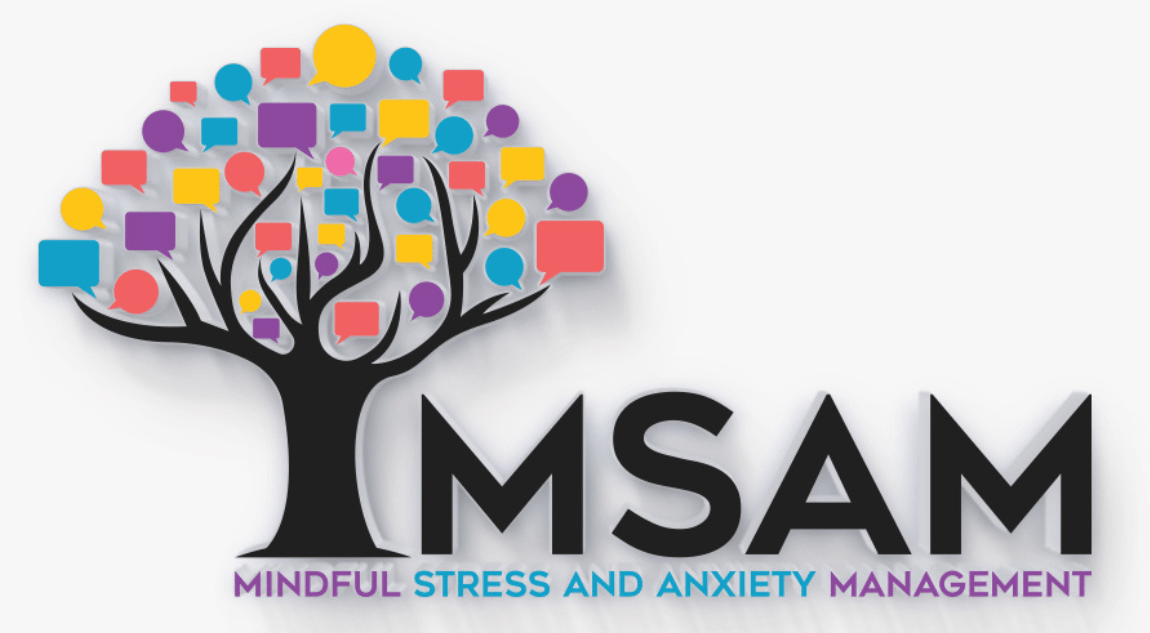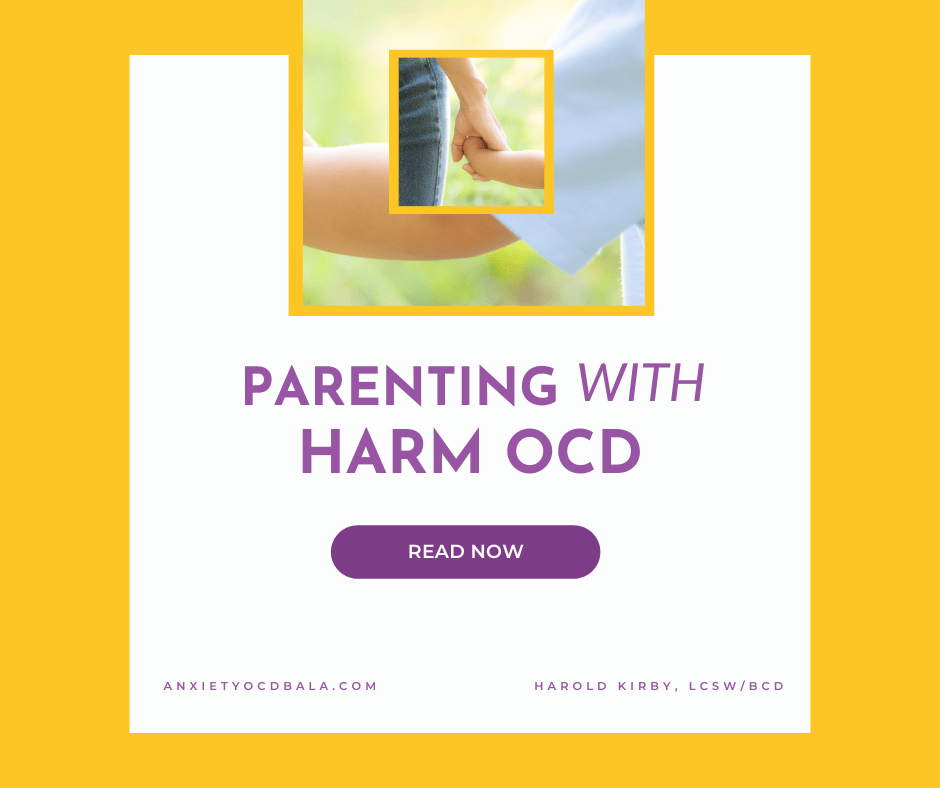
What is Harm OCD?
There are many different fears that someone with Obsessive-Compulsive Disorder (OCD) may latch onto, and all of them can lead to severe distress. When OCD manifests as violent or sexually violent thoughts and images, however, it can bring a particular torment to parents. These subjects are very taboo, and so many people live in pain and avoidance rather than seeking help. If you were having repetitive, graphic images of stabbing your spouse or your children, you too might be wary of sharing them.
Harm OCD is not as well represented in mainstream understandings of OCD (unlike, for example, contamination OCD), so it often goes unrecognized and therefore untreated.
All thoughts really are normal
Although not frequently discussed, violent and sexually violent thoughts are not unusual in the general population, and harm OCD is a common subset of Obsessive-Compulsive Disorder.
In fact, harm OCD thoughts are so common that 85% of people without OCD admit to having uninvited violent thoughts about harming themselves or their loved ones.
The difference is that for OCD sufferers, these thoughts and graphic images cause an undue amount of discomfort and distress. It is important to keep in mind that having repetitive unwanted thoughts is not due to a flaw in moral character, but rather to cognitive misfires in the brain. For OCD suffers, the thoughts “stick” and coagulate into obsessions which produce a tremendous amount of anxiety.
To try to reduce the discomfort and achieve certainty that they will not act on their thoughts, people with harm OCD become reliant on mental compulsions and avoidance. For example, a parent may avoid using a knife to prepare dinner if a child is present out of fear of hurting the child with the knife.
Parenting with Harm OCD
Whatever thoughts and images people find most distressing are typically the ones they will do their best to control or resist. The more a harm OCD sufferer tries to push out their morbid thoughts, the more those thoughts “stick.” Parents are innately protective of their children, and some of their most distressing thoughts involve harm to their children. Imagine what some of those fears might look like as a parent. Someone else hurting your children would be high on the list. Perhaps worse, however, would be you injuring, or even molesting or murdering your own children. These thoughts create extreme distress for parents with harm OCD.
Common harm OCD compulsions related to children
Commonly, harm OCD compulsions related to children are chosen in order to avoid fears of stabbing, hitting, strangling, molesting, or suffocating children. These compulsions can include:
- Avoiding spending time with them.
- Avoiding bathing them or changing diapers.
- Avoiding physical contact like sitting on lap.
- Avoiding knives and scissors (avoidance of cooking, engaging in activities that involve cutting).
- Avoiding taking them to playgrounds, parks and school.
- Avoiding disciplining children or any circumstance that may cause the parent to become angry.
Mental compulsions
Harm OCD sufferers may also ask constantly ask themselves the following:
- Did I touch my child in an appropriate way?
- Was I sexually aroused around my child?
- Do I still have feelings of love for my child?
- Did I feel an urge to act on my thoughts?
Reassurance seeking
They may also seek reassurance from others, such as by:
- Asking others for reassurance that you would never act on your thoughts or that you are a good person/parent.
- Researching cases of parents hurting their children.
- Self-reassurance (“I know I would not hurt my child because..”).
- Confessing to others that you may have touched your child in an inappropriate way or acted in an inappropriate way.
What if I go crazy and snap?
A common hurdle in treatment of parents with harm OCD is accepting that those thoughts exist. The constant fear of even having the thoughts maintains the obsessions and compulsions. The worry is: “If I accept these thoughts, I might act on them. I am not 100% sure that these thoughts are OCD.” It is the persistent need for 100% certainty that drives the obsessions and compulsions. Of all the OCD thoughts to accept, it is understandable that those concerning harming your own child would be among the most difficult.
What does this mean about me?
It is common for parents with harm OCD to assign too much meaning to a thought, assuming that they must have latent violent desires. If unchecked by compulsions, they worry they will “snap” and act on what feels like an urge. A parent with harm OCD may think they secretly want to act on their thoughts and that they are “fooling everyone.” The fear of having a violent thought or image is different from being in a delusional state and committing a violent act.

Postpartum OCD vs. Postpartum Psychosis
It can be particularly difficult for new mothers experiencing postpartum OCD, including harm thoughts, to seek proper diagnosis and treatment. This is due in part to the way postpartum psychosis (a distinct condition) has been reported on and sometimes sensationalized in the media. Research has shown that 3-5% of new mothers have obsessive postpartum thoughts of harming their children. Anxiety is the driving force behind these thoughts, not delusion, and are rarely acted upon. Conversely, violent thoughts are experienced very differently by parents experiencing postpartum psychosis. During a delusional episode, hurting their baby may seem like a “good idea”—this stands in stark contrast to someone suffering from postpartum harm OCD.
Postpartum OCD sufferers are terrified by the thought of harming their child. They do everything they can to dismiss the thoughts or to avoid having them. These dismissals or avoidances create a significant increase in distress. This is because, somewhat paradoxically, whatever we resist most actively tends to persist and escalate proportionally to the degree of our resistance. There is no guarantee that thoughts won’t be acted upon by anyone including those with postpartum OCD, but the chances are very low. These low odds are irrelevant to an individual suffering OCD, because the disorder demands a complete and total elimination of risk. However, this complete elimination of risk is not possible, and we all live daily with countless low-probability fears. It serves us well to learn to live with uncertainty.

Parenting with harm OCD: The actual danger
OCD sows doubt in sufferers’ lives, and can often lead to a lack of self-trust in a parent suffering with violent or sexual obsessive thoughts. Parents with harm OCD often do not seek treatment due to the shame they feel; the fear that they will be misunderstood; the fear of alienating a partner; or even the fear that vocalizing the thoughts will make them more likely to actually occur. The actual danger here is not that the person with OCD will act on their thoughts, but instead the repercussions for their family if they live without treatment for the OCD. It may be difficult to see the harm that compulsions cause to your family, which might include:
- Avoidance leads to a lack of physical affection.
- Lack of physical and mental presence in child’s life.
- Tension between partners and caregivers.
- Lack of healthy bonding between parent and child.
Effective Treatment for Harm OCD
Although harm OCD may seem very different from OCD about contamination, for example, the driving engine behind nearly all OCD is the need for certainty. Thus the treatment for people harm OCD cycle is the same for those with other forms of OCD
Cognitive restructuring of thoughts and beliefs through CBT is an important part of OCD treatment. As with other subsets of OCD, harm OCD is most effectively treated by a type of Cognitive Behavioral Therapy (CBT) called Exposure and Response Prevention (ERP) therapy. As well, mindfulness can nurture a sufferer’s ability to develop a nonjudgmental viewpoint, manage anxiety and live in the present.
Through ERP, people with OCD gradually learn to face the thoughts or situations they fear most while resisting the compulsions that they typically use to relieve their anxiety. It is difficult for parents with harm OCD to expose themselves to unwanted thoughts and stop compulsions; however, ERP is a highly effective and empirically-proven treatment method.
Examples of exposures
ERP treatment for harm OCD related to children will include in vivo, media, and imaginal exposures.
In vivo exposures
In vivo exposure refers to engaging in these activities while allowing the unwanted thoughts to come in instead of resisting them):
- Spending time alone with your children, including engaging in crafts with scissors or other objects that could cause harm to your child.
- Cooking or using knives in the presence of your children.
- Bathing or diapering your children and doing other caregiver routines with them.
- Resist asking for reassurance from friends and/or partner.
Imaginal exposures
- Writing and/or recording a story describing in detail your unwanted thoughts. The script will include events you imagine and the consequences of acting on the thoughts, both immediate and far reaching.
- Writing a description of the consequences of accepting uncertainty about the meaning of your thoughts and that you will never know for certain that you will not act on your thoughts.
Media exposures
- Reading articles or watching movies with similar subject matter to your thoughts that cause anxiety, such as articles about parents harming their children while in a violent rage or articles about pedophilia or films with similar themes. You will be asked to resist engaging in reassurance and compulsions that lessen the anxiety.
Finding Help
Many parents do not seek help for harm OCD for fear of misdiagnosis and ineffective treatment. These are legitimate concerns. Therefore, it is important to seek out a mental health provider specializing in OCD and trained in ERP. If you or someone you love is suffering with harm OCD, call an experienced mental health provider. At MSAM, Harold Kirby (LCSW/BCD) provides telehealth treatment for clients in Philadelphia and the surrounding areas of Pennsylvania and New Jersey (Main Line, Montgomery County, Camden, Cherry Hill), as well as in the South Carolina Lowcountry (Hilton Head, Bluffton, Beaufort, Colleston County, Dorchester County, Berkeley County, Charleston). Contact Harold at 610-517-3127 for a consultation or to schedule an appointment.

